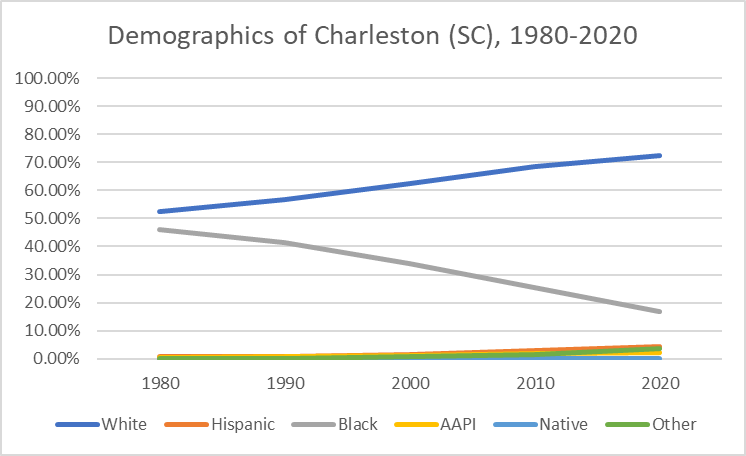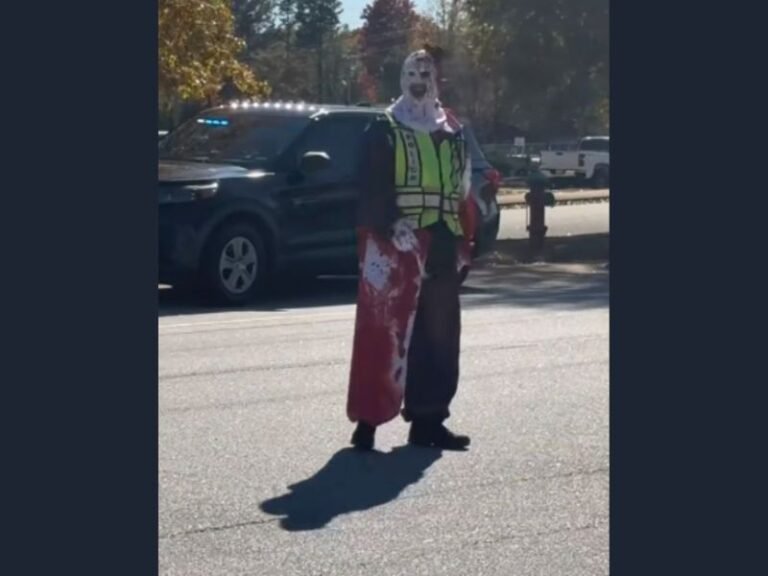Charleston Demographics Shift as Black Population Declines, City Leans Bluer
CHARLESTON, S.C. — Once a stronghold of South Carolina’s Black community, Charleston has experienced a dramatic demographic transformation over the past 40 years, sparking notable political changes and cultural debates.
Black population declines sharply
According to historical census and demographic data presented in recent political discussions, Charleston’s Black population has dropped from around 50% in 1980 to just 17% today. Simultaneously, the white population has risen steadily, while Hispanic and Asian American and Pacific Islander (AAPI) groups have also shown modest increases. A demographic chart circulating widely online illustrates this long-term trend from 1980 through 2020.
Observers attribute the decline to gentrification, rising housing costs, and economic displacement—particularly in the downtown peninsula and surrounding neighborhoods. Once-predominantly Black areas such as East Side, Wagener Terrace, and parts of North Charleston have seen waves of redevelopment and an influx of wealthier residents, often pricing out long-time Black families.
Political implications: Charleston leans bluer
The demographic shift has coincided with Charleston’s increasing support for Democratic candidates in national elections:
- 2012: D+5
- 2016: D+12
- 2020: D+16
- 2024 projection: D+8
Although the 2024 projection shows a slight decline in Democratic advantage, the overall trend still points to a blueward shift in a region historically associated with conservative politics. The city’s growth in young professionals, transplants from other states, and educated voters is helping drive that change.
Cultural tension: ‘Don’t California My South Carolina’
The ongoing political changes in South Carolina cities like Charleston have prompted pushback from some conservatives. Earlier this week, Rep. Nancy Mace (R-SC) tweeted, “Don’t California my South Carolina,” sparking sharp criticism from California Gov. Gavin Newsom, who responded by listing California’s advantages in education, wages, and public health compared to South Carolina.
Newsom’s tweet highlighted:
- Lower homicide and gun death rates
- Higher GDP and wages
- Free pre-K and community college
- Universal school meals
He closed by suggesting South Carolina could benefit from more progressive policies—a sentiment echoed by many Democrats in the Palmetto State’s urban centers, including Charleston and Columbia.
Charleston at a crossroads
With a population of approximately 150,000, Charleston is navigating a complex intersection of demographic change, cultural preservation, and political realignment. Local leaders are debating how to manage growth while ensuring historically marginalized communities aren’t left behind.
“This city is changing,” said a longtime resident who grew up on Charleston’s East Side. “And while it’s nice to see new investment, we also have to ask: Who is Charleston really for now?”
Charleston’s story is becoming a bellwether for broader statewide questions as South Carolina balances its past with the realities of 21st-century growth and diversification.
Are you a Charleston resident who has seen your neighborhood change? Share your story at saludastandard-sentinel.com — where South Carolina’s voices shape the news.







